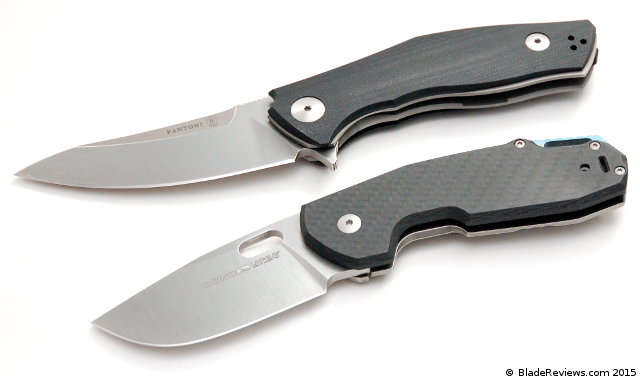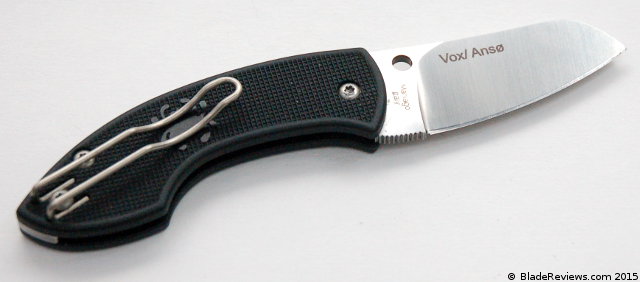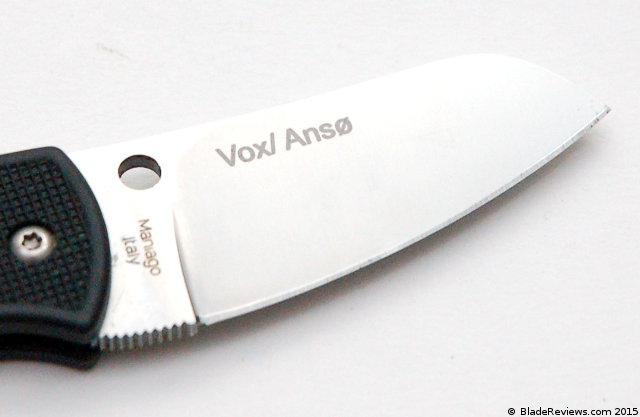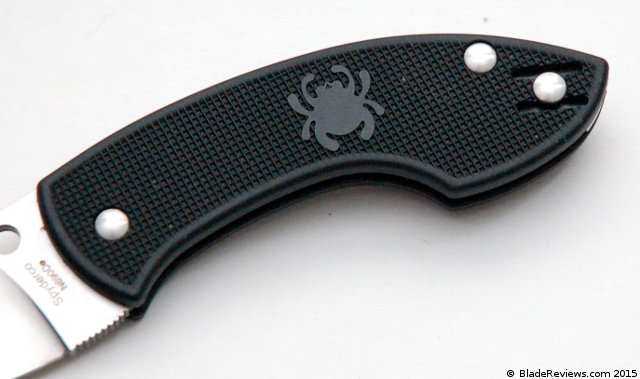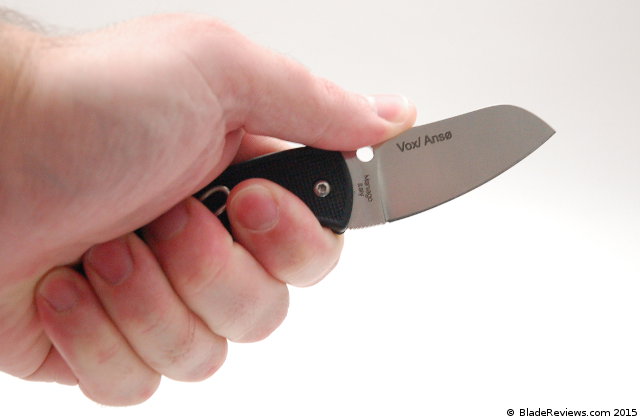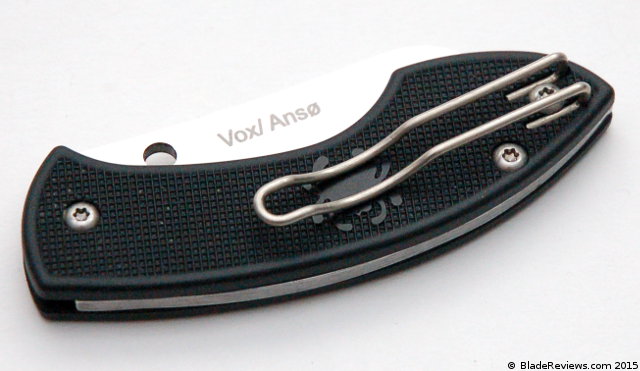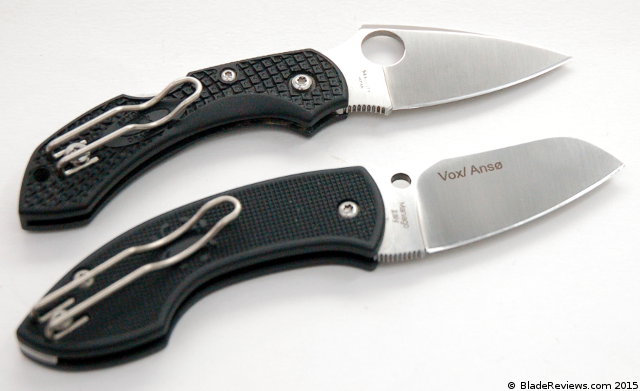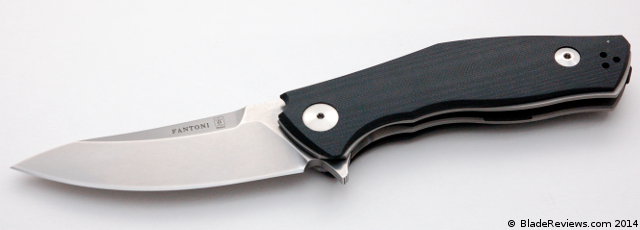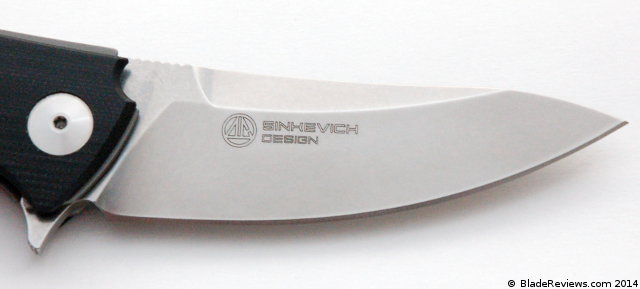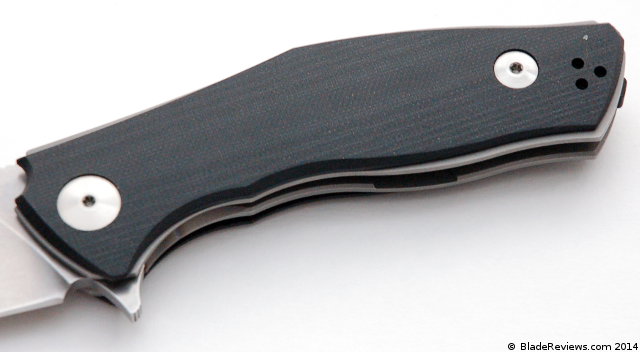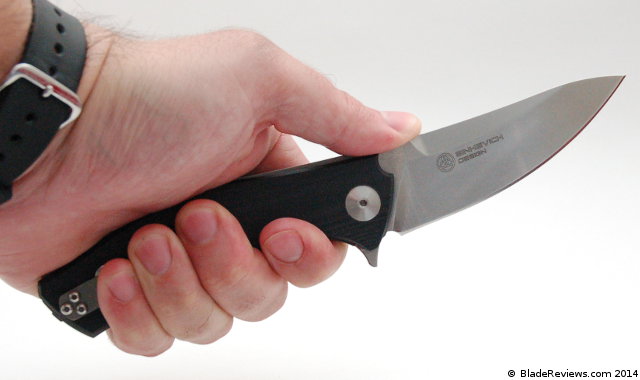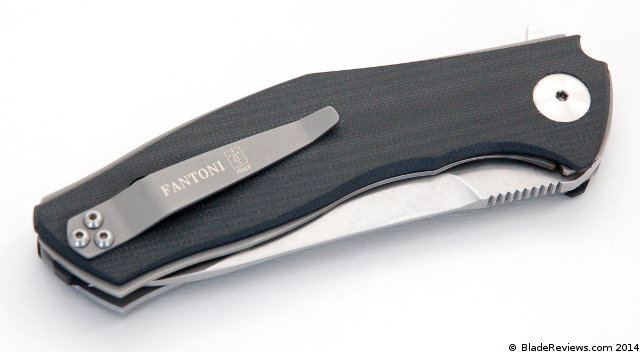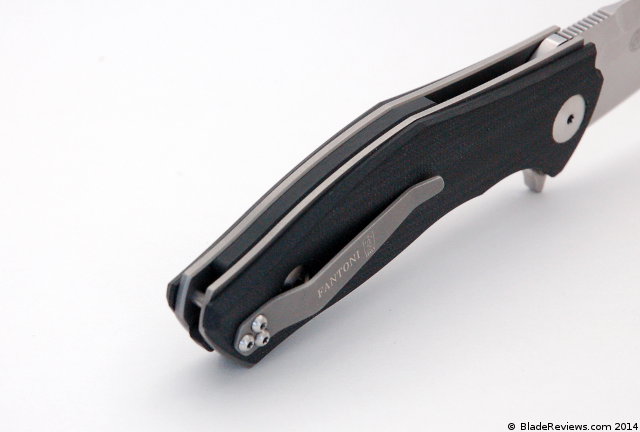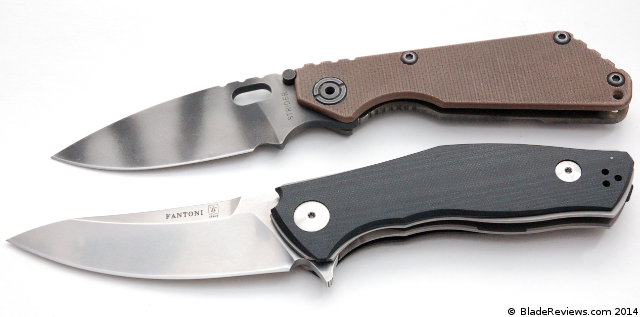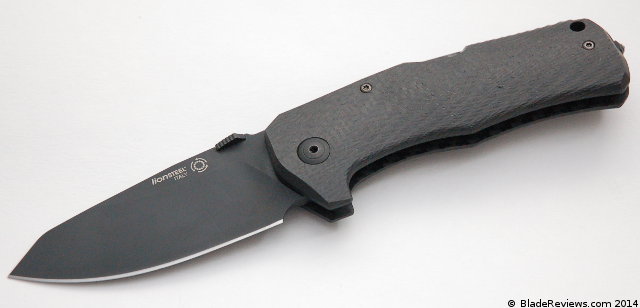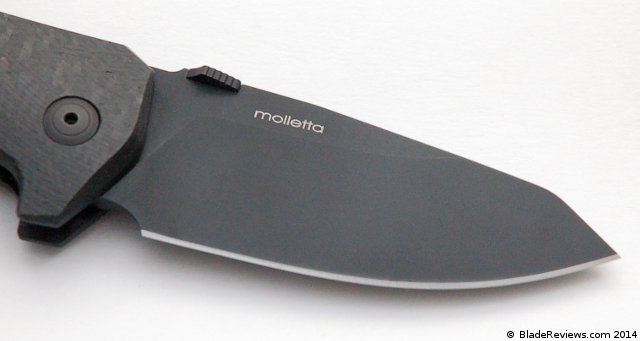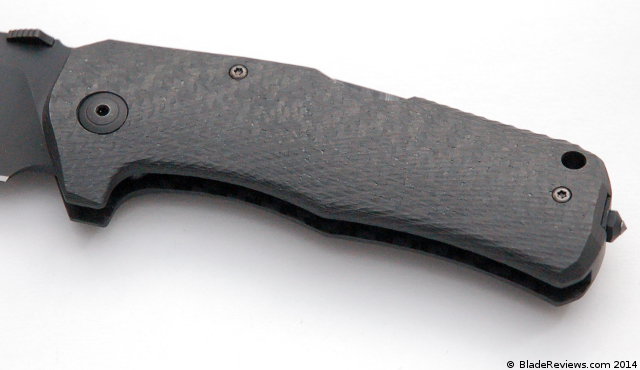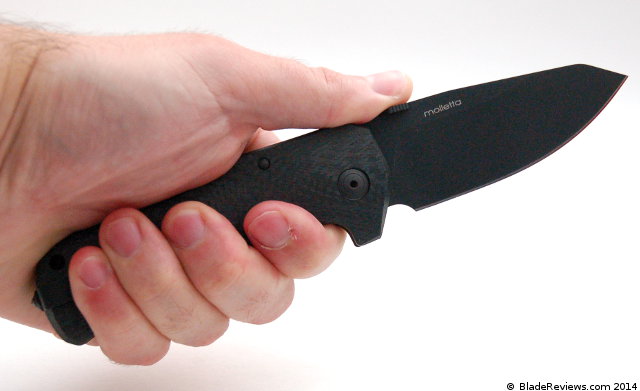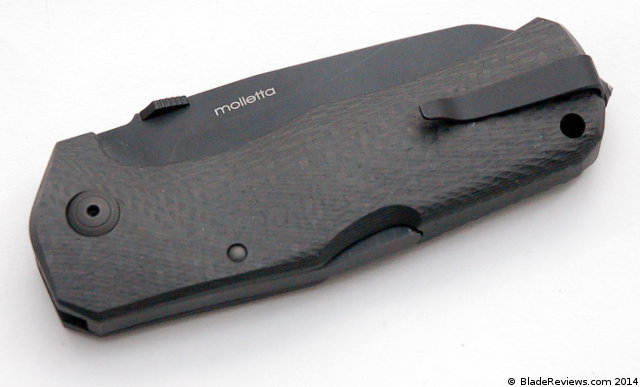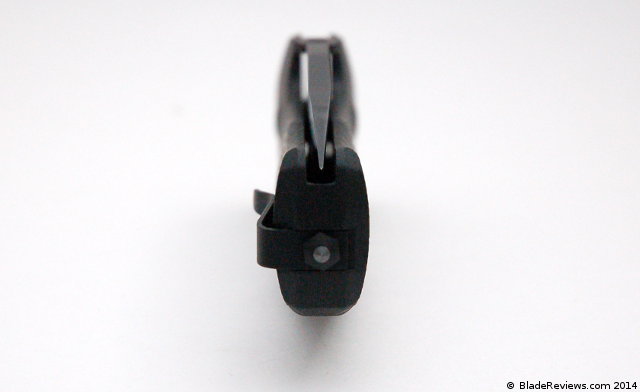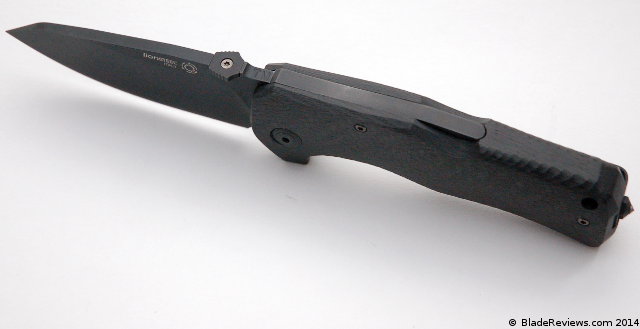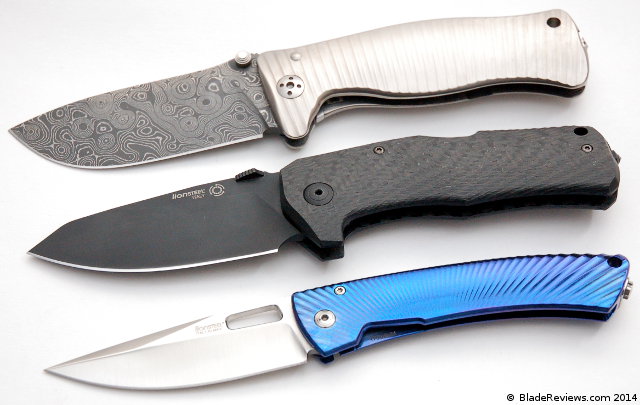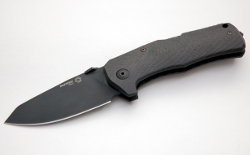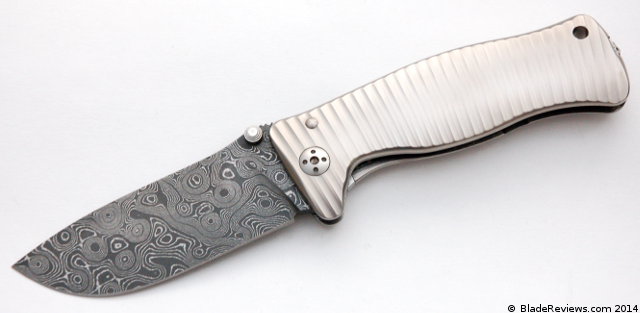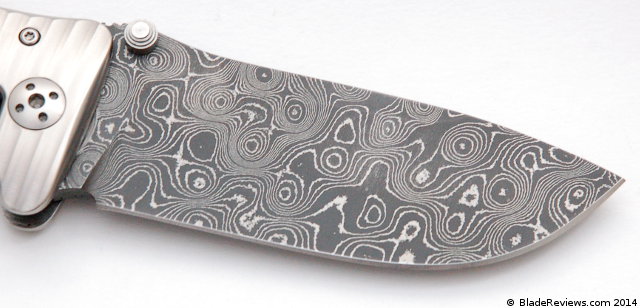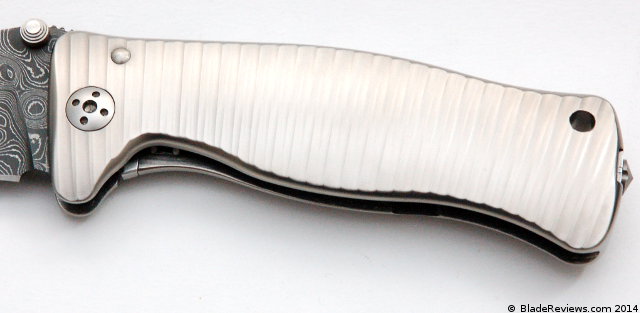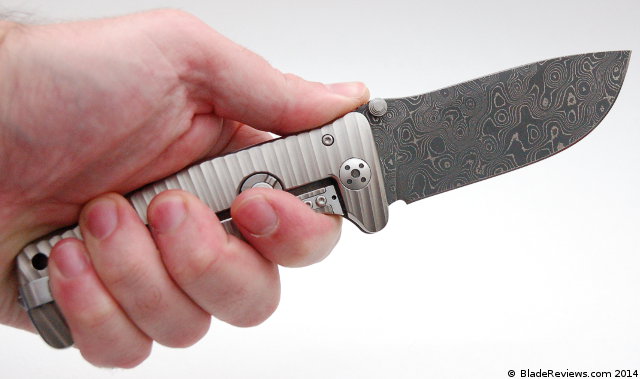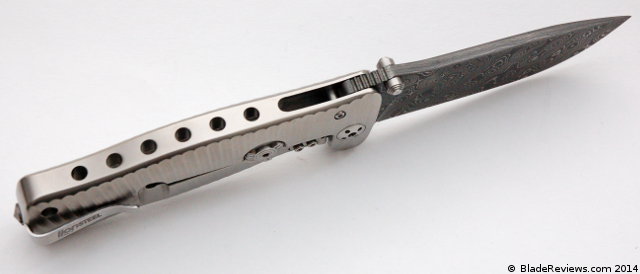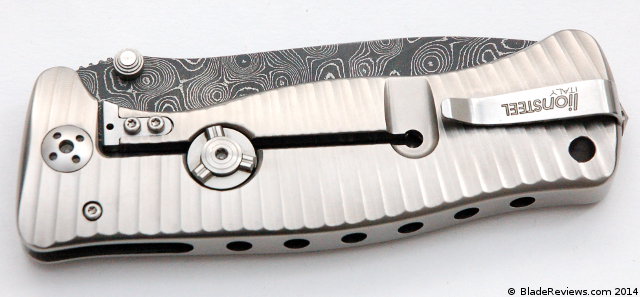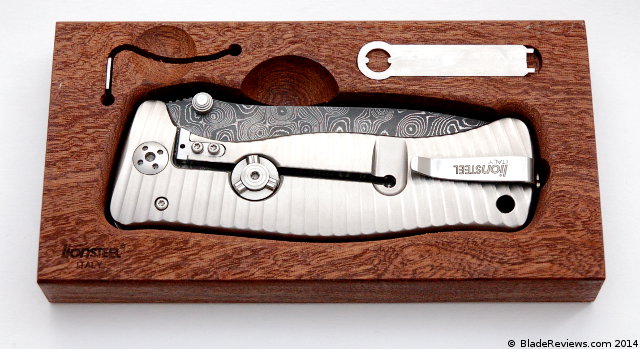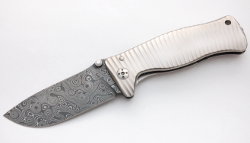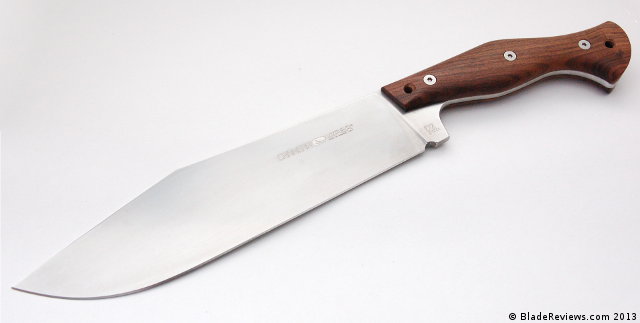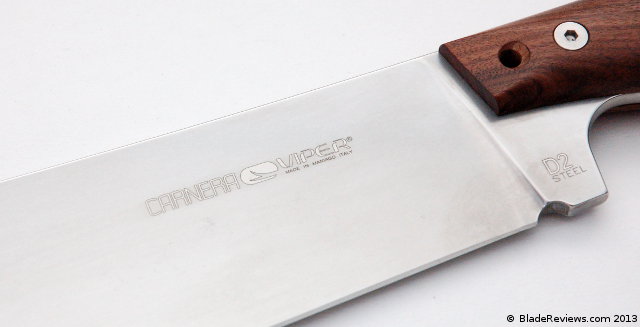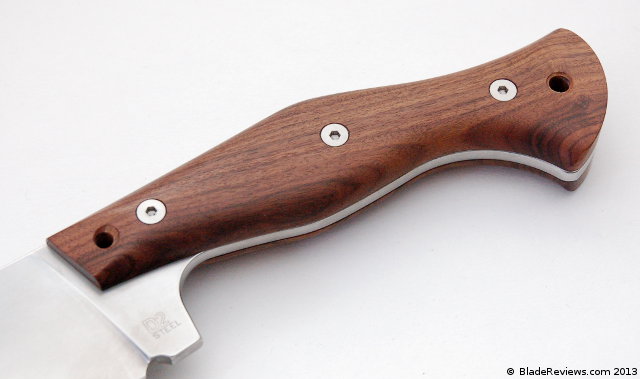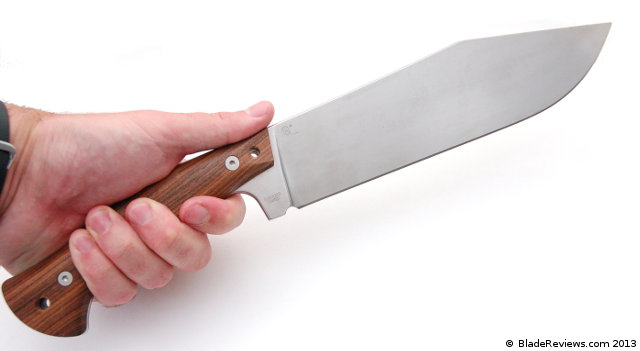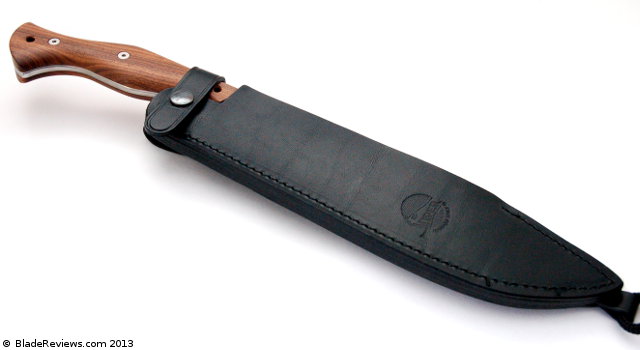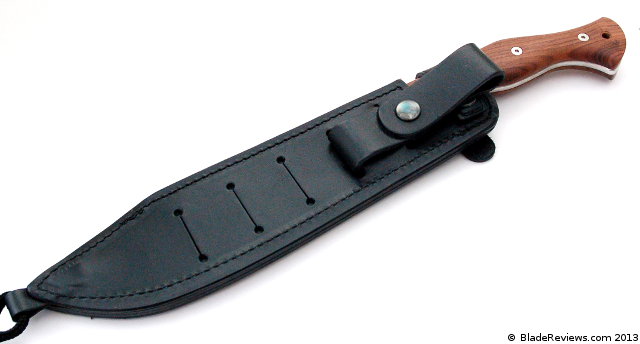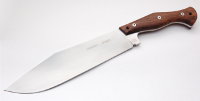The “Italian Renaissance” of knife making has been on my radar for a few years now. Manufacturers like LionSteel, Fox, Fantoni, and Viper are getting more traction stateside. The Italians have been doing some interesting stuff with manufacturing and innovation over the past few years, and the level of quality is often exceptionally high.
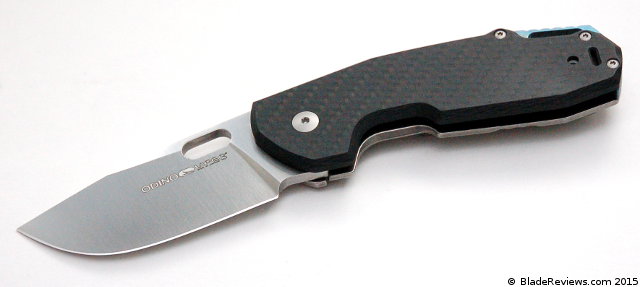
Buy the Viper Odino at BladeHQ
[easyazon_cta add_to_cart=”default” align=”center” asin=”B00SNANJ2K” cloaking=”default” height=”42″ key=”tall-orange” localization=”default” locale=”US” nofollow=”default” new_window=”default” tag=”brdfkdfk-20″ width=”120″]
However, if the end goal is selling knives in the USA, one way these companies have totally missed the mark is by failing to collaborate with high profile custom knife makers. This is a technique that has been leveraged to great success by companies like Spyderco, Kershaw, and CRKT. Viper has worked with some great Italian designers in the past, but if the goal is selling knives in the US market you need to play the game. That game involves working with designers that are popular in the US.
Viper finally got the memo, and entered into a bold high end collaboration with custom knifemaker Jesper Voxnaes to bring us the Odino. When I went to Blade Show 2014, the Odino was in pre-production, and all they had were some prototypes to handle. The knife was one of the highlights of the weekend, and I predicted that it would be a substantial success for the company when the knife eventually released. When I returned for the 2015 show, the Odino had been in production for the better part of a year and was a best seller for Viper. Jesper Voxnaes’ designs are as in demand as ever, and the quality in Viper’s manufacturing is top notch. I was not about to let another year slip away without reviewing the Odino.
General Dimensions and Blade Details
The Odino has an overall length of 7.25″, a 2.875″ blade, weighs 4.35 ounces (the carbon fiber version), and is manufactured in Maniago Italy. I would describe the Odino as a medium size every day carry (EDC) knife. It is more substantial than something like the Anso/Vox Pingo, but it won’t pull your pants down. The sub 3″ blade make it acceptable to carry in many locations. It comes in a variety of handle configurations, including full titanium, G10 / titanium, and carbon fiber / titanium (shown here). I prefer the carbon fiber version because it is lightweight and a little cooler than than the G10 model. The full titanium Odino is nice, but is a little hefty for my taste.
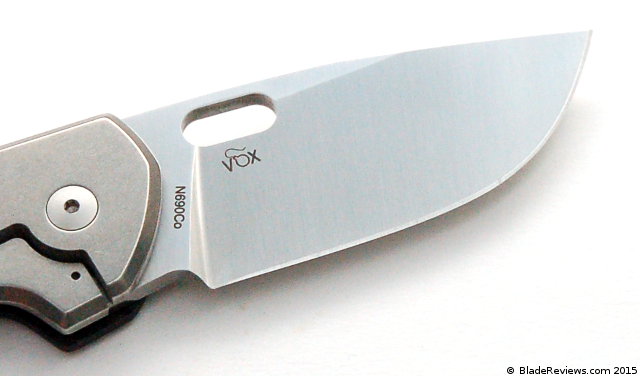
The Odino features a dramatic clip point blade. The knife has a wide profile, and the blade is relatively stubby when compared to the handle. The result is a substantial belly that meets at an acute tip. The blade is 3.8mm thick, and has a high flat grind, and comes with either a PVD coated blade or satin finish. The spine is rounded and the edge has been neatly applied.
Viper went with Bohler n690 stainless steel for the blade, a common choice among Italian manufacturers, and a steel that I am experienced with. I like n690 for an EDC knife. It reminds me somewhat of 154CM: it holds a nice edge, exhibits good corrosion resistance, yet is easy to sharpen and won’t break the bank. It takes a nice finish and strikes me as a great all round steel for a folder.
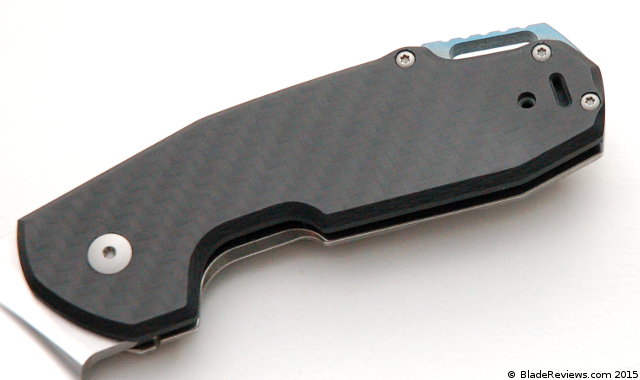
My Odino came sharp and was quickly taken to task on some plastic and cardboard. These can be challenging materials for a pocket knife, and I was pleased with the way the Odino’s thin flat grind handled them. Having carried the Odino for several weeks now I have found it capable as a daily carry piece. It is a good slicer, and has held up well under normal use.
Handle, Ergonomics, and Pocket Clip
The handle of the Odino includes a titanium locking side, your choice of titanium, carbon fiber, or G10 for the show side, and an anodized titanium backspacer. Construction is screw together, and the knife is simply finished with chamfered edges. The carbon fiber on my knife is nice, and I can’t detect any voids in the surface of it. The titanium has been stonewashed and left with a pleasant matte finish. The backspacer is arguably the nicest detail of the knife. It juts from the back of the handle, is designed to accept a very large lanyard, and is contoured and jimped. The powder blue anodizing provides a touch of color without being over the top. It’s a lovely feature. Everything has been beautifully implemented.
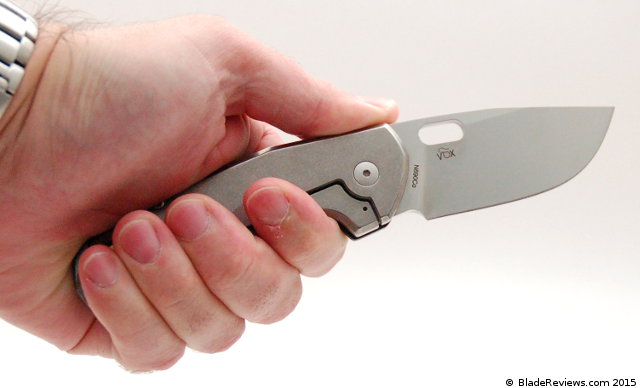
The Odino benefits from good ergonomics and is a solid performer in the kitchen and around the house. Naturally, being an Italian knife I had to make a pizza with it. There is no jimping on the spine, and none of the surfaces are especially “high traction”, yet the smart design kept the knife in hand without issue. I find myself choking up quite a bit on the ricasso, although the default grip sets you back on the handle a bit.
The pocket clip of the Odino kind of like a deep carry Strider SnG clip. Viper milled a slot into the handle, and a tab on the clip sits into the slot and allows the clip to be mounted with a single screw. It’s simple, but the end result is functional and elegant. The clip itself is nice. It does a good job burying the knife discretely into the pocket, has good retention, and isn’t funky. The clip has been bead blasted and it compliments the rest of the hardware.
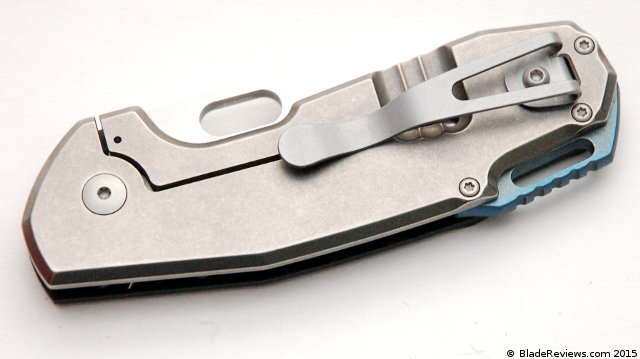
Deployment and Lockup
The Odino makes use of an oval thumb hole to open the knife. Due to the low profile of the blade in the closed position, this isn’t the most convenient knife to open, but the thumb hole works well and is still relatively easy to get at. The detent is tuned to a good balance of blade retention and easy access. There are caged bearings inside and the action is extremely smooth.
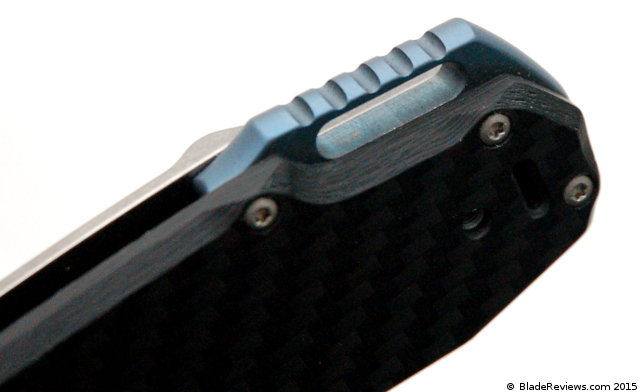
The framelock on the Odino is simple and well executed. There is no steel lock bar insert or overtravel stop mechanism (2 features that have become increasingly common on titanium framelock knives). Some might be disappointed with the omission of these features, but the Odino’s lock performs great. Lockup on my knife is early and solid. There is no lock rock or blade play to speak of. The lock disengages smoothly from the blade and there is no stick. This is one of the better true titanium framelocks I have handled.
Blade centering is also perfect on my Odino.
Viper Odino Review – Final Thoughts
The Odino has sold well for Viper. In my weeks of carry and use, it is easy to see why. The design is thoughtful and elegant, the materials are top notch, the build quality is superb, and the price is reasonable for what you are getting. Viper was smart to pair up with Jesper Voxnaes for their first big collaboration. Vox is not just a respected name in the knifemaking community, he is a talented designer that brings function and restraint to his work. Viper did a beautiful job rendering his design, and the resulting knife is likely to appeal to audiences on both sides of the pond.
I especially like the G10 and Carbon Fiber versions for EDC. Weighing a full ounce less than the full titanium version, this compact folder has a very capable blade, is comfortable to use, and carries well. The full titanium version is tank like, and may appeal to folks who appreciate more substantial knives.
I don’t see much in the way of downsides when examining the Odino. The profile is a little chunky, and an oval thumb hole is not my all time favorite means of opening a folding knife, but if you are a fan of the design I think you will love the Odino. It is beautifully done and hopefully a sign of more high profile collaborations to come from Viper.
[easyazon_block add_to_cart=”default” align=”center” asin=”B00SNANJ2K” cloaking=”default” layout=”top” localization=”default” locale=”US” nofollow=”default” new_window=”default” tag=”brdfkdfk-20″]

Viper Odino – From $169.00
From: BladeHQ
[easyazon_infoblock align=”center” identifier=”B00SNANJ2K” locale=”US” tag=”brdfkdfk-20″]
I recommend purchasing the Odino at BladeHQ or [easyazon_link asin=”B00SNANNFI” locale=”US” new_window=”default” nofollow=”default” tag=”brdfkdfk-20″ add_to_cart=”default” cloaking=”default” localization=”default” popups=”default”]Amazon[/easyazon_link]. Please consider that buying anything through the links on this website helps support BladeReviews.com, and keeps the site going. As always, any and all support is greatly appreciated. Thank you very much.
